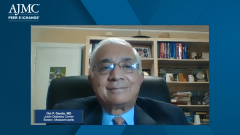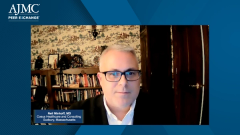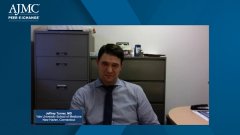
Outcome Monitoring and Patient-Centered Interventions for Cardiorenal Metabolic Syndrome
A panel of experts discuss monitoring outcomes and effective patient-centered interventions to improve care for patients with cardiorenal metabolic syndrome.
Episodes in this series

Neil Minkoff, MD: You mentioned you have a clinic designated to metabolic syndrome. How does that clinic get measured in terms of the job it’s doing? You brought up earlier that none of the patients have their LDL [low-density lipoprotein] controlled, and not all patients have their blood pressure controlled. Are you tracking that kind of information in the clinic?
Om P. Ganda, MD: I wish I could give you a conclusive answer. That requires some type of a well-designed study with a control group. Unless you have a control group, you can never answer that satisfactorily, so we’re looking into that and seeing if we can get some funding to do it properly. We look at patients who are being discharged and given this advice and treatment, as well as the other group that is followed by either the cardiologist, PCP [primary care physician], or endocrinologist in isolation rather than as a team. That’s another way of looking at it, a team-based approach versus an individual specialist. Neither of us are perfect in every field, so collaborating will, hopefully, give use some answers and more time.
Neil Minkoff, MD: Are there any interventions that you think are particularly impactful on patient outcome? I mean starting interventions in terms of when to talk to the patient, educating the patient, education of the PCP, etc. Is there anything that jumps out as lessons learned, or times when you can have a more impactful interaction to drive patient care?
Jeffrey Turner, MD: Having a deep understanding of the patient and where they’re at is incredibly important, and that means where I’m at in my day with patients and how much time I have to sit down and talk with them. I’ll sit down and think about starting a patient on medication, like an SGLT2 [sodium-glucose cotransporter-2] inhibitor, but I know on that particular day, in that setting, I’m not going to have the time to explain and win this patient over on taking this medication, so I’ll save it for a next visit when I’ll be able to take the time. This gets missed by clinicians all the time, but we’re asking a lot of a patient to start taking a daily medication for presumably the rest of their life, and we underestimate how much we ask of patients when we simply prescribe something to their pharmacy. Winning them over can take a couple of visits to get them to where they need to be mentally to buy into this medication.
Nihar R. Desai, MD, MPH: That’s a great point. This is not just about getting out your prescription pad or typing into the electronic health record to send that prescription to the pharmacy. It has to be about engaging patients, explaining to them what the benefits are, what they can expect, and why we think this is an important piece of a broad treatment program for them. For our patients with heart failure, we want to counsel them about volume management and why we’re making modifications to their diuretic program. If they have diabetes, like Dr Ganda was saying, we might be making adjustments to their other glucose-lowering therapies. You want to counsel them about potential adverse effects or preemptive measures that you want to take to try to avoid those adverse effects. It has to be about explaining the logistics, what other changes we have to make as part of the plan, and how we’re going to check in to make sure that things are going the way that we want them to go. That’s not just for 1 person, and that’s not something to do amidst a busy session. On the heart failure side, we have a robust disease management program with advanced practice providers, nurses, and pharmacists, and we’ve tried to bring that team together and empower every member to be part of this—to engage with our patients and help get them on therapies that are going to be important for them from a cardiovascular risk-reduction standpoint.
Om P. Ganda, MD: The last point I wanted to make was something that requires a long discussion at some point, and that is access of patients who are socially impoverished. In every study, we look at people with low social-economic status and certain ethnic backgrounds, including Mexican Americans, Hispanic Americans in general, and African Americans; they’re not getting the care they deserve, even more so than the populations that can afford it. We see a lot of patients with mass health and at every stage of research, and they’re forced to stay on the generic drugs because they can’t get anything else.
Transcript edited for clarity.
Newsletter
Stay ahead of policy, cost, and value—subscribe to AJMC for expert insights at the intersection of clinical care and health economics.






























































